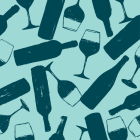Bordeaux 2019 gets into gear
Bordeaux 2019 gained traction this week with a number of new releases, all pointing to a trend in reduced pricing.
- Chateau Haut Brion and sister estate La Mission Haut Brion have released at €282 per bottle ex-negociant and €180 per bottle ex-negociant respectively, marking drops of 30.9% and 28.6% on last year’s release prices.
- Carruades Lafite released at €145 per bottle, down 19.4% on last year’s price.
- Cheval Blanc made its release at €370 per bottle – a significant 29.9% down on 2018.
- Lafite was the first of the First Growths to release its 2019. At €396 per bottle, it’s 15.7% lower than the 2018 release price.
- Lynch-Bages released at €66 per bottle, marking a drop of 26.6% on last year.
- Mouton Rothschild made its release at €282 per bottle – 30% less than 2018.
Napa Valley wineries begin reopening
Authorities in California has given Napa Valley wineries the green light to reopen, following several weeks of closures due to the coronavirus pandemic.
Providing local county officials are satisfied that the wineries are following strict safety guidelines, they will be permitted to open to visitors. New measures will include face masks for tasting room staff, six-foot distances between groups, disposable menus and prioritising outdoor seating. Many wineries will also request visitors call ahead in order to make reservations.
These measures have been quickly embraced by the wine sector in California, which had suffered from significant revenue loss following pandemic restrictions. “Our wineries are excited to reopen and welcome guests,” said Bobby Koch, president of the California Wine Institute.
Champagne Gosset launches 12-year-old cuvee
Champagne Gosset has launched a 12-year-old non-vintage cuvee based on the Champagne region’s 2006 harvest.
Based on the 2006 vintage – although including an 8% component of reserve wines from other harvests – the Champagne is a blend of 51% Pinot Noir and 49% Chardonnay. Officially titled ‘Gosset Brut 12 Ans de Cave a Minima’, a limited edition run of just 12,000 bottles have been produced, each priced at £95.
As is Gosset’s practice, none of the wines in the blend have been through malolactic fermentation, nor seen any contact with wooden vessels. Gosset’s cellar master, Odilon de Varine, described the Champagne as having “great aromatic complexity, with plum, citrus peel, liquorice and peppermint”, adding that it’s “a Champagne for true wine and food lovers.”
Italy continues to attract serious collectors
An exceptional 2016 vintage for the Italian Nebbiolo grape is helping to attract more savvy wine collectors to the homelands of Barolo and Barbaresco, according to a new report from Decanter.
“Quality has gone up steadily for a long time now,” said Greg St. Clair, Italian wine buyer at US merchant K&L. “In reality, since 1995, there’s only been one bad vintage – the 2002.” Meanwhile, CEO of wine merchant JJ Buckley told the publication: “As a whole, Italian wines stand out for their high quality and low prices – in fact, probably the best values in the world.”
Import tariffs on many Bordeaux and Burgundy wines introduced last year have only made Italian wines more attractive to the serious collector, who are – the report says – increasingly recognising the value, diversity and investment potential to be found in this part of the world.
The report follows similar findings from analyst group Wine Lister, which earlier this year published its member merchant’s predictions that Piedmont would likely become a collection staple in the coming years.
‘Ground-breaking’ research project could hold the key to understanding ageing potential
The UK’s Plumpton Wine Division says that one of its students is working on a “ground-breaking” project that could have a major impact on the wine industry across the globe.
The project explores the relationship between the Maillard reaction – a chemical reaction between amino acids and reducing sugars – and a wine’s ageing potential. By cross referencing findings with wine samples assessed by experts as having the ability to age, be at the peak of aging, or be on the decline, it may be possible to create an empirical relationship between a wine’s compound structure and its potential for ageing both in the short- and long-term..
Jack Thorpe, who is carrying out the research, said the findings “will have direct implications for the industry on a global scale”. His research advisor, Dr Askay Baboo, added that some of its theorized applications include “its use by negociants to assess the potential for ageing of a wine from a producer in a given vintage, to globally assessing a given vintage for a specific region, to the insurance industry and their assessment of value of a given wine”.
Thorpe is now looking for sponsorship from the industry to help support the research, the results of which are due to be published in March 2021.






